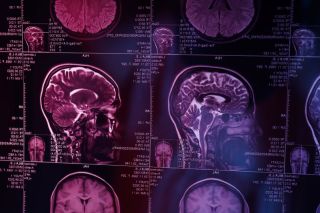How Ketamine Helps Reprocess Traumatic Memories: A Breakthrough for PTSD Treatment

For many people with Post-Traumatic Stress Disorder (PTSD), traumatic memories don’t just exist in the past—they remain raw, intrusive, and emotionally overwhelming. Unlike ordinary memories, which the brain naturally processes and stores over time, traumatic memories often remain stuck, triggering distressing flashbacks, nightmares, and heightened emotional responses.
Traditional PTSD treatments, such as Cognitive Behavioral Therapy (CBT) or Eye Movement Desensitization and Reprocessing (EMDR), aim to help individuals reprocess these memories, but success can be limited, especially when the brain is locked into patterns of fear and avoidance. This is where ketamine therapy is changing the landscape of PTSD treatment. By influencing memory formation and retrieval, ketamine provides a unique opportunity to revisit trauma in a new way—one that fosters healing instead of reactivating distress.
Why Do Traumatic Memories Feel "Stuck"?
PTSD disrupts the way the brain encodes and retrieves memories. Normally, memories are processed in a way that allows them to be stored without overwhelming emotional responses. But with trauma, this system malfunctions:
- The amygdala, the brain’s fear center, remains overactive, reinforcing the association between a past traumatic event and a sense of present danger.
- The prefrontal cortex, responsible for rational thought and emotional regulation, struggles to override those fear signals.
- The hippocampus, which helps contextualize memories as part of the past, has difficulty distinguishing between past trauma and present reality.
These neurological changes make it difficult for people with PTSD to move on from trauma, even when they logically understand that the event is no longer happening. Instead, traumatic memories replay in vivid, distressing detail, reinforcing a cycle of fear and emotional pain.
How Ketamine Changes Memory Processing
Ketamine’s effect on memory is one of the most intriguing aspects of its use in PTSD treatment. Unlike traditional antidepressants, which take weeks to influence mood, ketamine works within hours—primarily by altering activity in the glutamate system, the brain’s most abundant neurotransmitter network.
A Temporary Window for Change
Ketamine blocks NMDA receptors, which play a key role in memory encoding and synaptic plasticity. This disruption creates a temporary state in which traumatic memories can be recalled without triggering the same overwhelming fear response.
Interrupting Fear-Based Memory Loops
One of ketamine’s most profound effects is its ability to disrupt repetitive trauma cycles in the brain. Studies suggest that ketamine may help "overwrite" old memory pathways by promoting new neural connections. This makes it easier to detach trauma from automatic fear responses, weakening the emotional grip that these memories hold.
Dissociation: A Mechanism for Healing?
Ketamine and Fear Extinction: Weakening Trauma’s Grip
In PTSD treatment, one of the biggest goals is fear extinction—the process by which the brain learns that past dangers no longer pose a threat. Traditional exposure therapy tries to achieve this by repeatedly revisiting traumatic experiences until they lose their emotional intensity. However, for many people with PTSD, this process is slow, painful, and sometimes ineffective.
Ketamine may accelerate fear extinction by reducing the amygdala’s hyperactivity, making traumatic memories feel less threatening. It also strengthens new, healthier neural pathways, allowing positive associations to replace old, fear-based reactions.
Why Combining Ketamine with Therapy Matters
While ketamine alone can create rapid symptom relief, its effects are most powerful when integrated with psychotherapy. Talk therapy is more effective when the brain is in a more adaptable state, making it easier to reframe trauma and build resilience.
Patients who combine ketamine with trauma-focused therapy often experience:
- A greater ability to engage with therapy without shutting down.
- More fluid emotional processing, making it easier to work through difficult memories.
- Stronger, longer-lasting symptom relief compared to ketamine or therapy alone.
At Therapeutic Infusions, we encourage patients to explore Ketamine-Assisted Psychotherapy (KAP) or other trauma-informed therapy approaches alongside their treatment.
A New Approach to PTSD Recovery
For individuals who have tried traditional PTSD treatments without success, ketamine therapy offers a new path forward. By helping the brain reprocess traumatic memories, ketamine provides a unique opportunity to weaken the emotional charge of past trauma, reduce fear-based reactions, and create space for meaningful healing.
If you or a loved one is struggling with PTSD, Therapeutic Infusions provides safe, professional ketamine therapy tailored to your needs. Contact us today to learn more about whether ketamine therapy is right for you.





